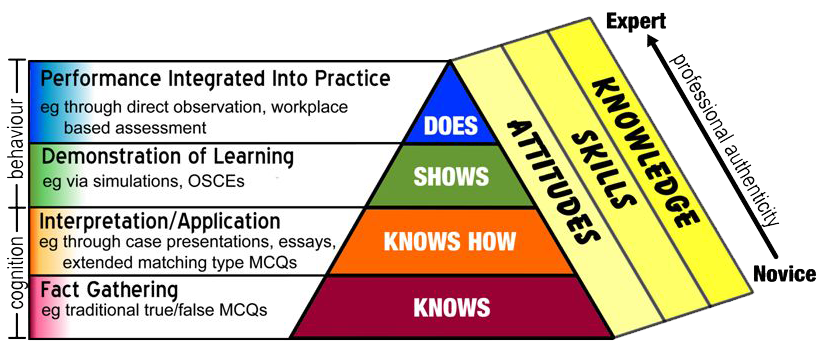The following resources will help you to design class activities which incorporate the elements of effective clinical communication, using the videos as teaching tools. Click on each to see more information and resources.
- Foundation Knowledge lesson plan
- Miller model lesson plans and activity sheets
- Bank of quiz questions
- Clinical Communication rubric
.
A Foundation Knowledge lesson plan
This lesson has been designed for students studying to become a health professional and who are about to embark on their first clinical placement or field placement in their program of study. It is based on the Clinical Communication Rubric, which addresses a range of communication elements which are important in a clinical setting.
The lesson is written for a student audience, to provide them with knowledge of the communication process.
The lesson can be supported by other activities aiming to develop emotional intelligence to guide communication.
..
The Miller model resources - lesson plans and activity sheets
- Module 1 'KNOWS': Lesson plan (word, 160 KB) and Student activity sheet (word, 88 KB)
- Module 2 'KNOWS HOW' Lesson plan (word, 146 KB) and Student activity sheet (word, 92 KB)
- Module 3 'SHOWS HOW' Lesson plan(word, 161 KB) and Student activity sheet (word, 97 KB)
- Module 4 'DOES' Lesson plan (word, 154 KB) and Student activity sheet word, 96 KB)
Quiz questions based on the videos
We have prepared a series of multiple choice quiz questions which can be used to consolidate and assess the students' understanding of the elements of clinical communication showcased in the videos.
You can download these questions in two formats: as a word document, or as a Moodle xml document. See the instructions below for recreating the questions in your own course website.
- Word document (17 KB). Add the questions manually as quiz questions into your Learnonline course website question bank.
- Moodle xml file (46 KB). Upload the questions directly (import them) into the question bank for your Learnoline course. You can then put them into a Moodle quiz, and adjust them or delete them as you want.
Note that these processes will put the questions into your course Question Bank, but will not actually create or set up a quiz. To do that, you will need to create a Moodle quiz and add the questions.
The Clinical Communication rubric
The Clinical Communication rubric lists the elements of effective clinical communication under three headings:
1: Adapting your own communication to the level of understanding and language of the patient, avoiding jargon
2: Building and maintaining rapport and an empathetic relationship and ensuring that the patient feels attended and listened to
3: Relating to the patient respectfully including ensuring confidentiality, privacy and autonomy and recognizing the patient as a partner in shaping a relationship
You can use the rubric in course or assessment design, as a basis for learning outcomes or assessment criteria.
Download the rubric (17KB)
